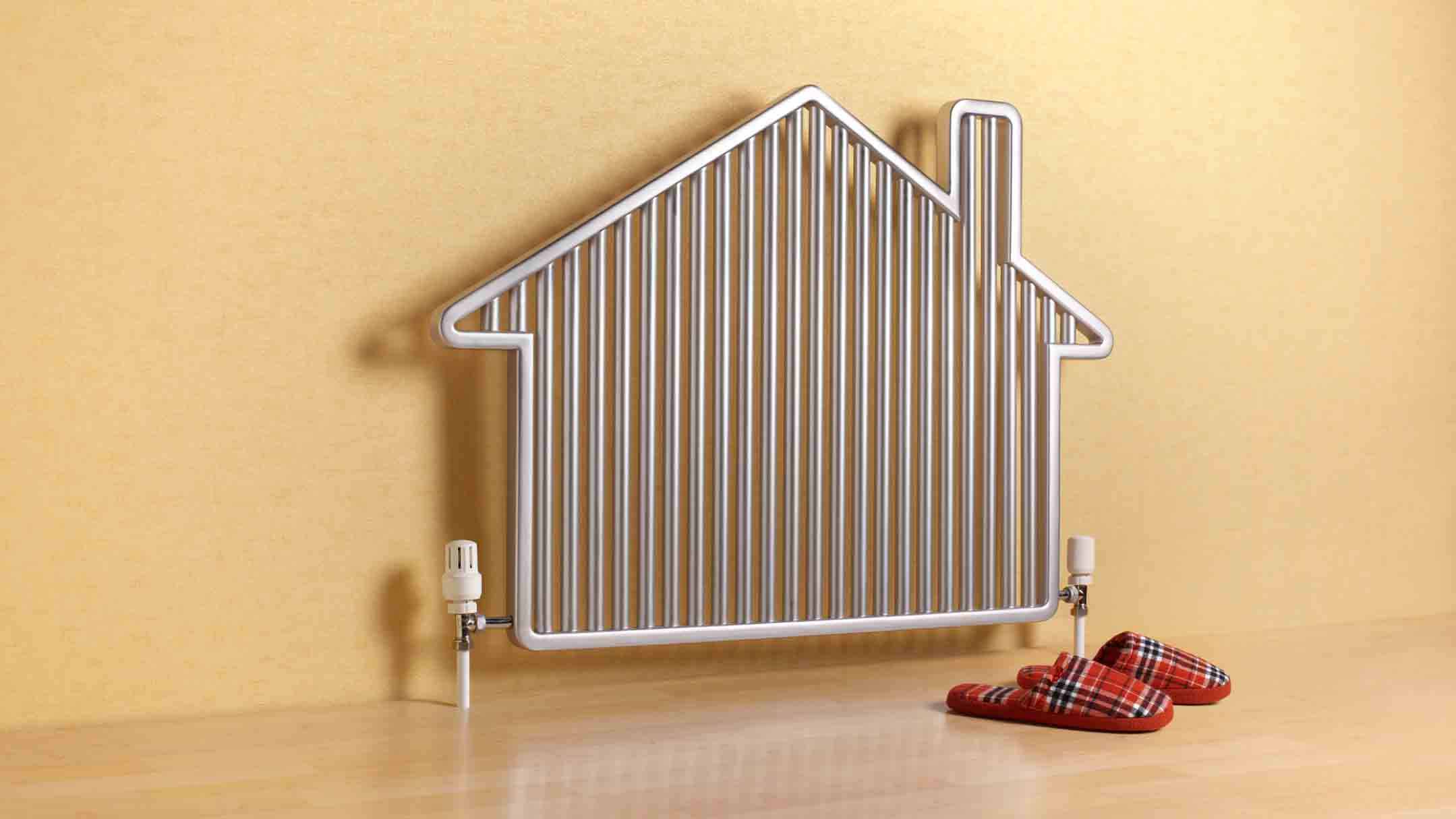The best gas furnaces can keep your home warm and cozy. We know technically it’s still summer, but a new season is just on the horizon. So, if you’re wondering which gas furnaces are well worth every dollar, look no further. We’ve pulled together a guide to help you narrow down the top-rated gas furnaces to heat your home.
When looking for the best gas furnaces, we’d suggest looking at each model’s efficiency rating. This will give you an indication of the overall running cost. The initial price of the furnace might be affordable, but how much you can expect to pay year in, year out, is just as crucial. To help steer you in the right direction, the Annual Fuel Utilization Efficiently (AFUE) is the figure to watch out for. This indicates how much heat a furnace produces from a cubic foot of gas. The higher the percentage, the better. In our guide, we’ve included models that have a score of 90% or higher.
Of course, the overall running costs of the best gas furnaces will also vary depending on the size of the home you’re heating, the size of the model, and installation costs. These brilliant in-home heaters can set you back anywhere between $2,500 to $5,000. So it’s important to invest wisely.
If you’re looking for more ways to heat your home, check out our guide to the best baseboard heaters.
1. Rheem: Best gas furnace overall
Why you can trust Top Ten Reviews Our expert reviewers spend hours testing and comparing products and services so you can choose the best for you. Find out more about how we test.
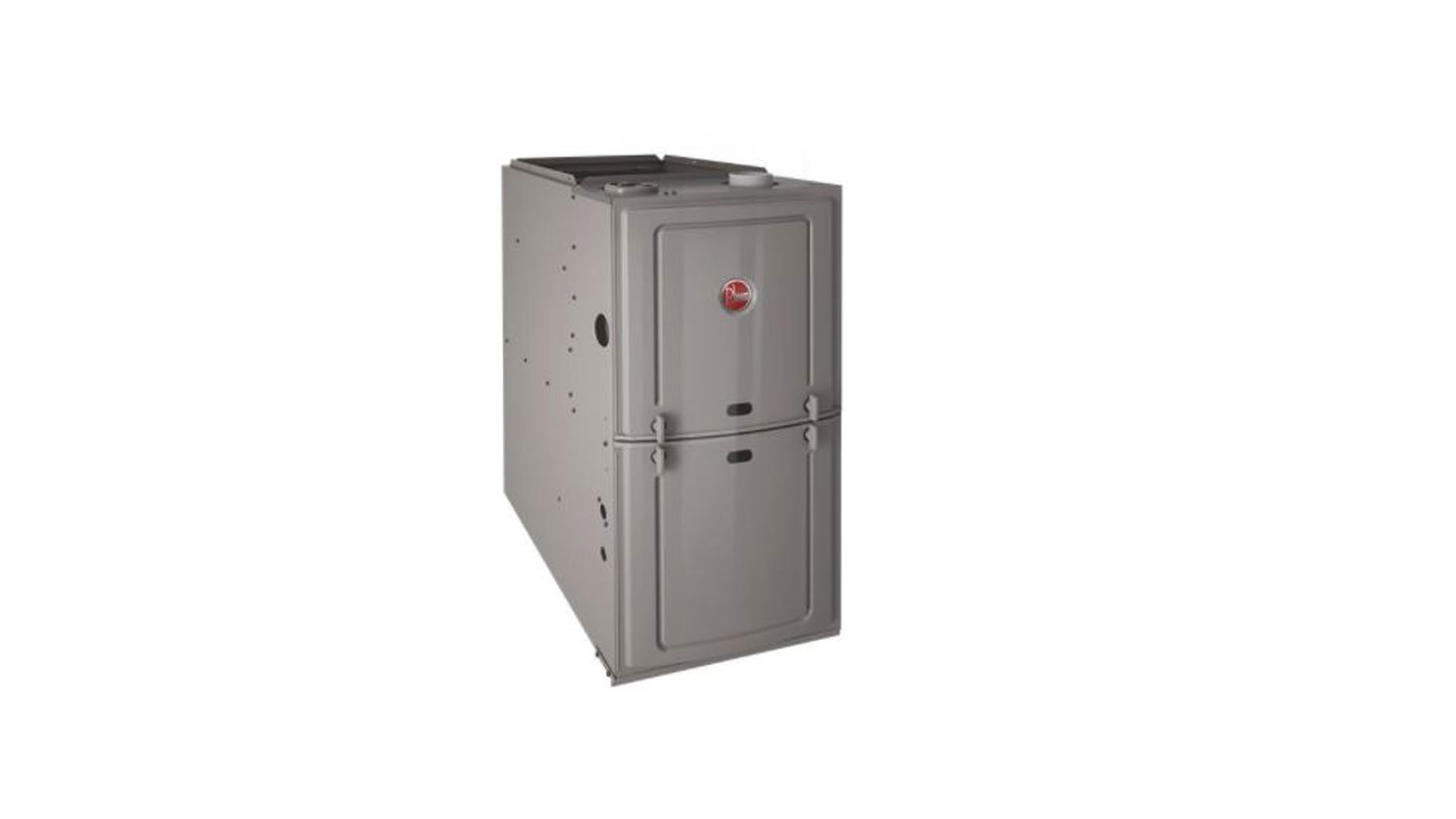
Rheem gas furnaces are a great all-round option. They’re popular thanks to the great reliability of their models, as well as good warranty options. The Rheem gas furnace range consists of twenty models in total, spread across a budget, mid-range, and premium series with features varying to match.
The premium Prestige Series contains a choice of both modulating and two-stage operation models as well as good to great AFUE ratings. The mid-range Classic Plus Series offers the widest range of choice with nine models, but even the budget Classic Series contains models with plenty of features, so it shouldn’t be difficult finding a reliable gas furnace heater that matches your home’s needs.
- Read our Rheem gas furnaces review
2. Amana: Best gas furnace warranties
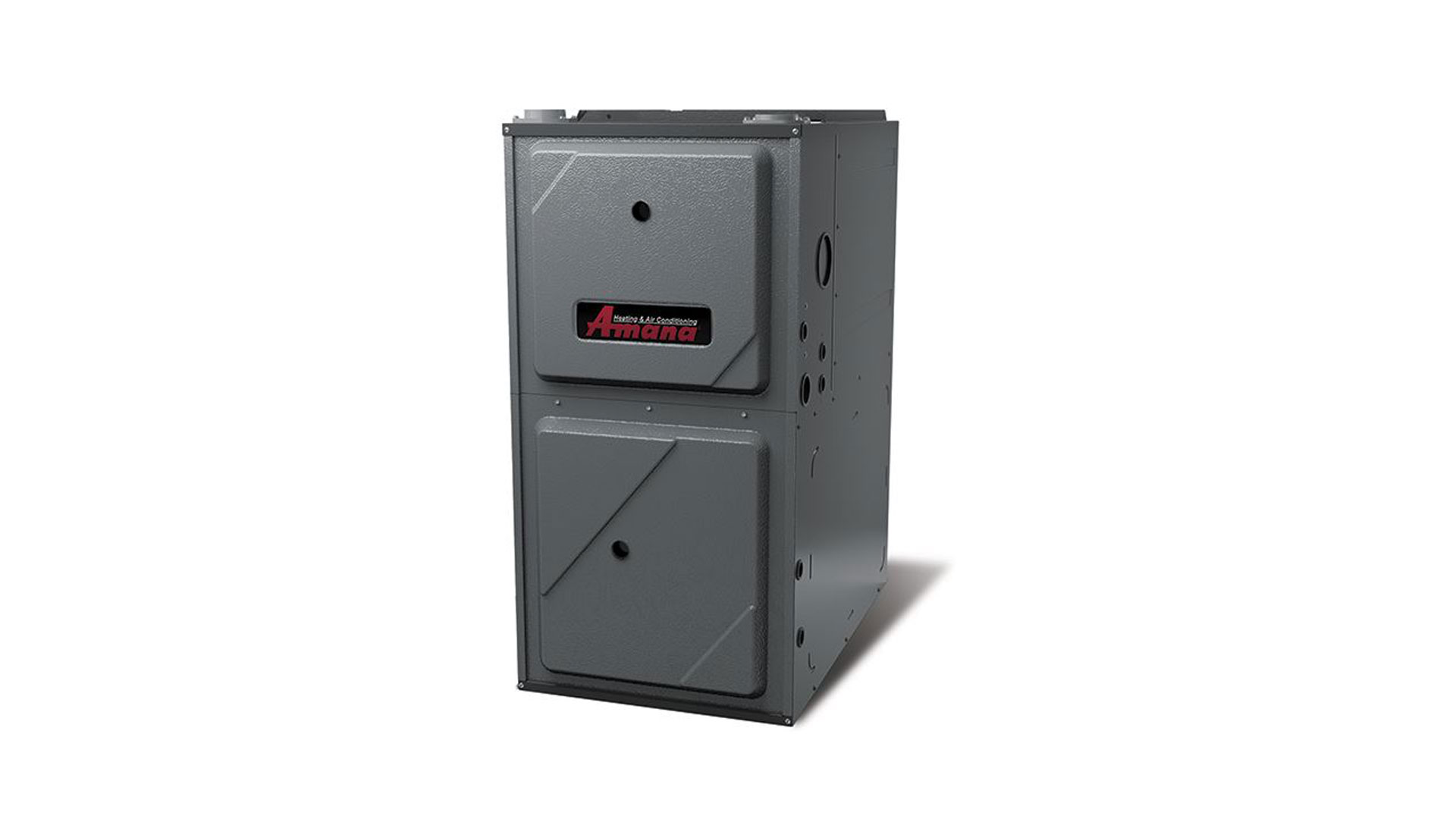
Amana’s gas furnaces may not have as much in the way of proprietary features as its competitors, but they do have some of the best warranties on the market as well as good extended service agreements, so you know your furnace will be well-taken care of, even after installation.
Amana has a good range of energy-efficient models with its highest-rated model achieving a great 98% AFUE rating. Higher-end models also feature Amana’s Integrated communicating ComfortBridge™ technology, which is off-the-wall communicating technology that constantly monitors and adjusts the system for consistent heat and lower energy usages.
- Read our Amana gas furnaces review
3. Bryant: Best gas furnaces for energy efficiency
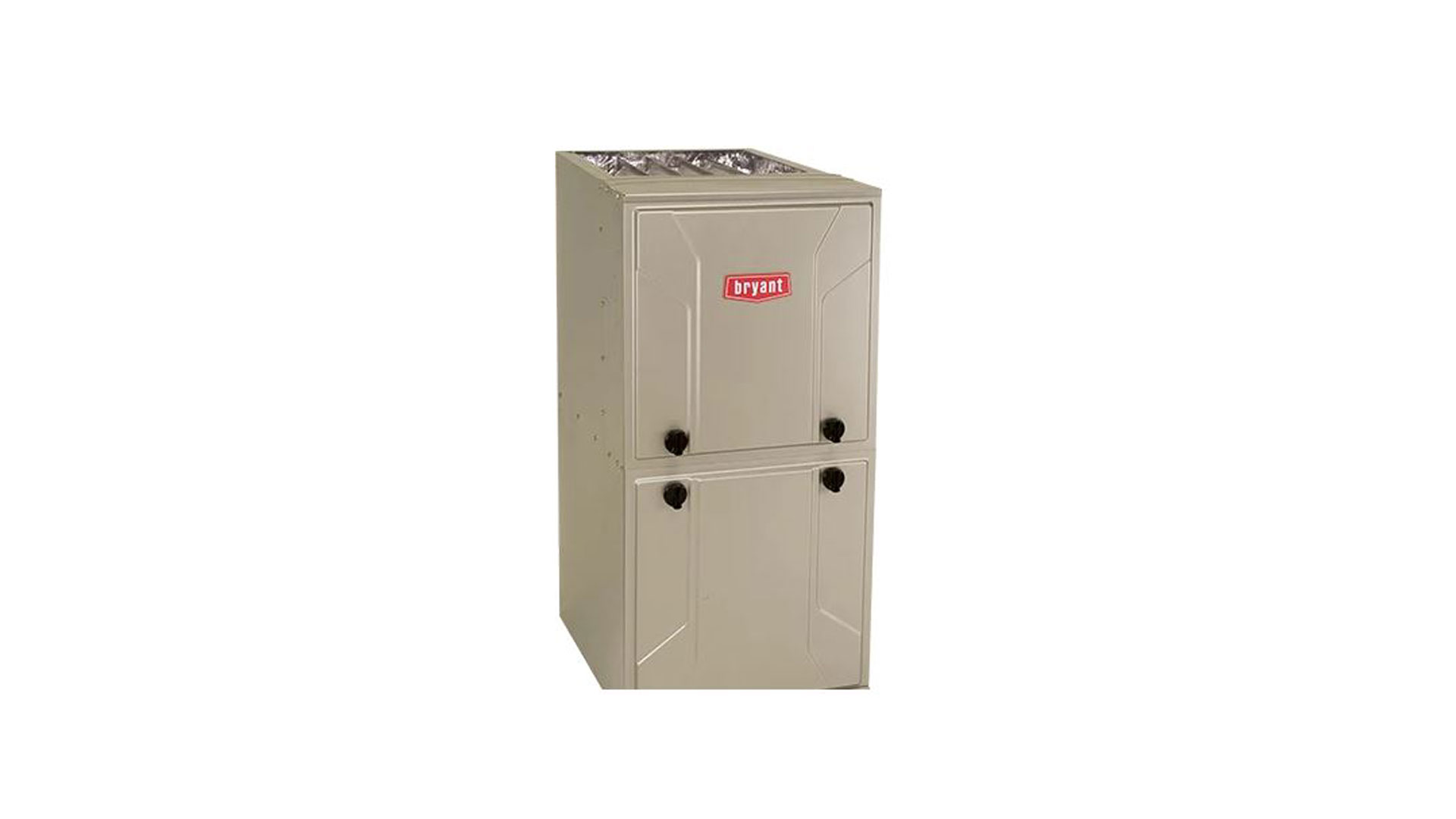
Bryant gas furnaces might be a bit short on premium options, but the brand has a great selection of mid-range models that offer great features without a big price tag. Most models, even in the budget Legacy range, are ENERGY STAR® certified and one model even has an impressive AFUE rating of 98.3%. The mid-range Preferred series does a great job of balancing lower price points with better features usually found in premium ranges, such as self-diagnosis and humidity control. If you live in a colder region, the range of energy-efficient gas furnaces on offer from Bryant gives you plenty of options for models that will heat your home while lowering energy bills.
The premium models they do offer come with a great range of features, including variable speed airflow and Perfect Heat® Plus technology, which are designed to help keep your home comfortable year-round. You’ll also find modulating systems within Bryant’s premium Evolution Series, whereas the Preferred and Legacy Series models stick to either one-stage or two-stage systems.
- Read our Bryant gas furnaces review
4. Goodman: Best gas furnace range
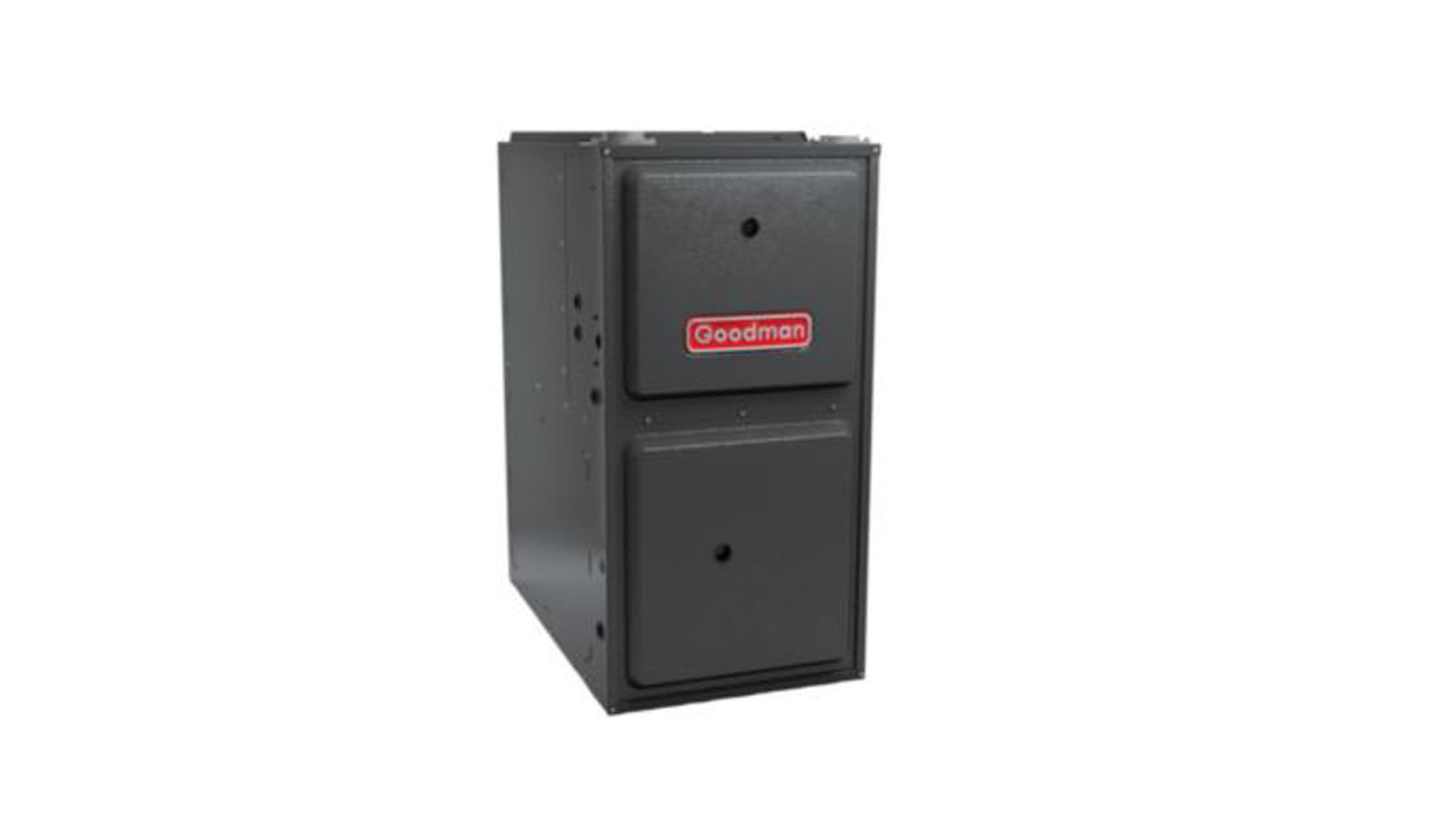
With almost thirty models on offer, Goodman has a large range of gas furnaces available with a wide enough range of features that it should be possible to find a suitable model for all homes. The gas furnaces all have good to great AFUE ratings, many come with enhanced dehumidification options and comparable models from competitor brands tend to retail for a few hundred dollars more, so they also offer good value for money. Goodman also offers good warranty options as long as you register your unit within 60 days.
Goodman also utilizes a range of features designed to keep its gas furnaces running quietly, even in its entry-level models. A popular option is the GMVC80 that keeps noise to a minimum through a high-efficiency variable-speed motor. Other models include a multi-speed ECM blower motor, which drastically improves the air conditioning efficiency, while those in the GMV range also have an auto-comfort mode designed to dehumidify quickly and effectively.
- Read our Goodman gas furnaces review
5. Trane: Best gas furnaces for allergies
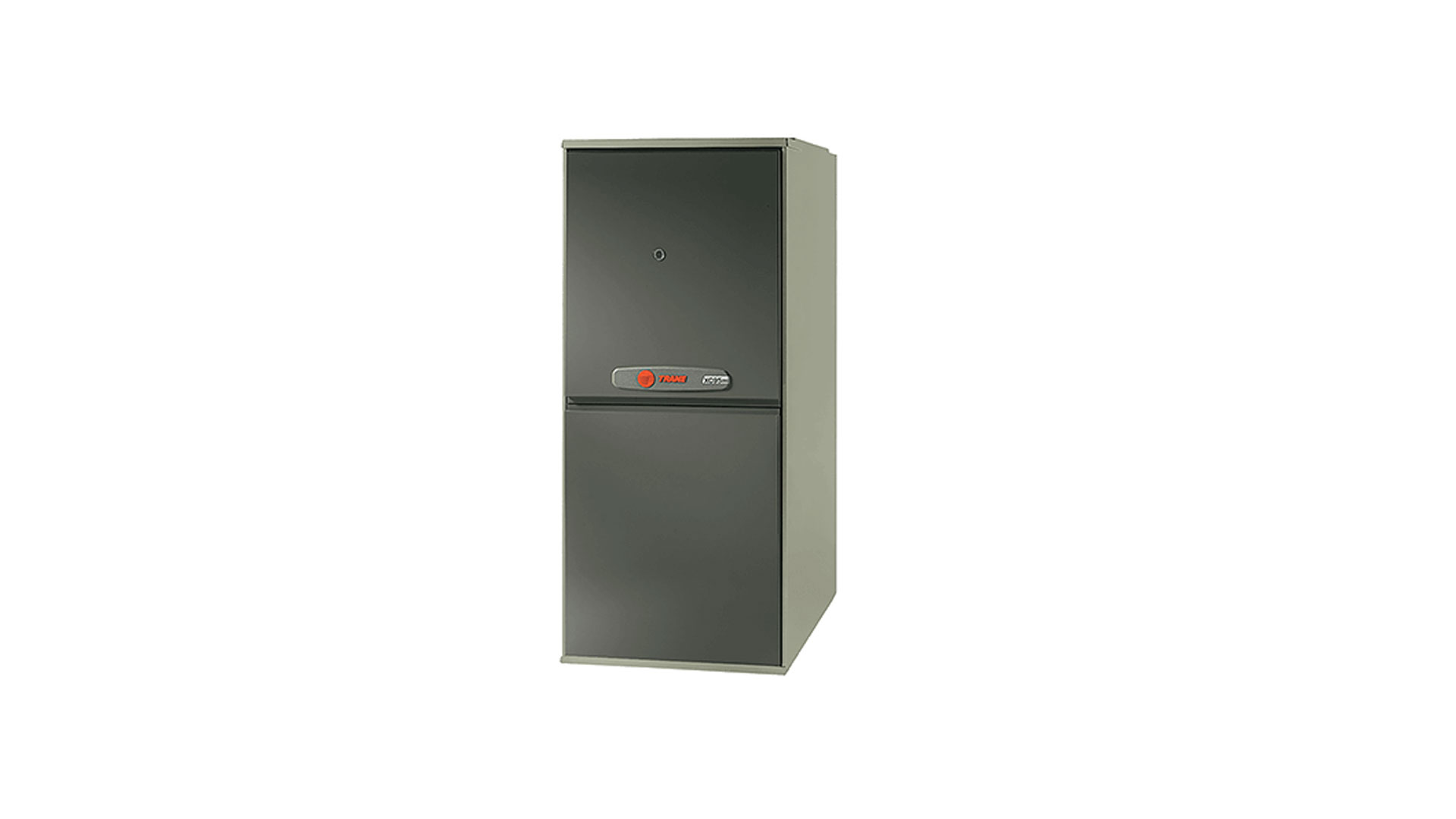
Trane offers a wide range of models grouped at similar price points, so you have the option to pick from a wide range of features, no matter your budget. All of Trane’s high-end models are ENERGY STAR® certified with an AFUE rating of 90% and above. Trane’s Comfort-R solution is also a nice feature that removes moisture from the air while slowly increasing temperature and some models also have an optional advanced air filtration system that removes irritants from air-conditioned air.
Some models also have the option of CleanEffects™ Air Cleaner, an advanced air filtration system designed to remove irritants from air-conditioned air. This is a great option for anyone with asthma, allergies, or hayfever.
Trane also has good gas furnace options for homeowners especially concerned about noise. The S9V2-VS, for example, utilizes a Vortica II variable-speed blower, as well as a variable speed draft inducer for those looking for efficient home heating with quiet operation.
- Read our Trane gas furnaces review
How much do gas furnaces cost?
You can expect to pay between $2,500 and $5,000 on average to buy a new furnace and have it installed in your home. Unfortunately, there's no standard rule for how much a gas furnace costs because it depends entirely on your home's size and location, the installer you choose, the furnace brand, and its efficiency rating. This is one of the reasons that it's important to get multiple quotes when it's time to replace your furnace.
What to look for in a gas furnace
A professional should install your furnace
Most HVAC contractors have the education, skill and familiarity required to install your gas furnace properly and safely. This includes the ability to do brazing, electrical work, plumbing and framing if necessary. They should also be licensed and certified to install your new furnace. If a contractor is unable or reluctant to supply this information, that's a sign to choose someone else.
As you search for a contractor, you can check out their reputations using online customer reviews on Yelp, Google and similar websites. If they don't stand up to scrutiny, don't use them, even if they are the lowest bid. Natural gas furnaces are long-term investments, so don't budge on getting the best appliance and installation your budget allows.
A good HVAC professional will listen to your requests, answer your questions, clearly outline the required work and costs, and know detailed information about the gas furnace’s warranty. Installers will also have gas furnace suggestions for your home.
Efficiency ratings
When selecting a furnace, consider its Annual Fuel Utilization Efficiency (AFUE) rating. This standard was created by the American Society of Heating, Refrigerating and Air-Conditioning Engineers (ASHRAE) and represents how much heat a furnace produces from a cubic foot of gas. For example, an AFUE rating of 96 percent means the furnace produces 96 BTU of useful heat for every 100 BTU of natural gas burned.
Furnaces with high AFUE ratings can save you a significant amount of money in heating and electricity bills. However, the furnaces with the highest AFUE ratings normally cost more than other models, so you may want to compare the higher cost with your potential energy bill savings over time to see if it's worth the investment.
The national minimum efficiency AFUE requirement is 78 percent, though most modern units start around 80 percent. Although the most efficient furnaces we came across during our research have an AFUE of 98.7 percent, over half of the models we evaluated have an AFUE rating above 90 percent.
System size
Every home is different in its layout, ducting, insulation, materials, and location. A natural gas furnace that is too small will not produce adequate heat in the winter or circulate enough cool air in the summer. Conversely, a system that is too large for your home will cost more to run and not efficiently maintain correct temperatures. Check with your contractor for suggestions on the best size for your home, local climate conditions, and budget.
Heating stages
Gas furnaces use heat exchangers to produce heat; these come in two varieties: single-stage and two-stage. Single-stage furnaces switch on and off until your home reaches the desired temperature. These are usually older, less-efficient models and are a good choice for most homes. In two-stage gas furnaces, a second, stronger stage turns on to achieve quicker results with less effort and fuel when the first stage is not effective enough.
Blower speeds
In addition to heat exchangers, most gas furnaces have a blower that blows at an unalterable speed. However, you can get a variable-speed blower that tailors its output to provide constant heat in a longer, less demanding cycle. As a result, variable-speed furnace blowers use less gas and operate more quietly.
Modulating valves
Some furnaces have a special modulating gas valve that works together with a variable-speed blower to provide stable temperatures in a home. Modulating furnaces can reach an AFUE of up to 98 percent. While they cost more, these furnaces maximize your comfort and can greatly reduce your overall energy costs.
Warranty
Gas furnaces usually carry two individual warranties: one for the heat exchanger and another for all other parts. The heat exchanger is the most important part of the furnace and should have the longest warranty possible, preferably over 20 years. However, the parts warranty only needs to be five to 10 years. As a separate consideration, your contractor should provide a warranty on their installation.
Rebates
Discuss the availability of manufacturer rebates or tax credits with your installer. This is a great way to save money and offset the initial cost of a new furnace. Government agencies actively encourage homeowners to improve their energy consumption, and you may be able to deduct the purchase of a new heating system on your taxes. In a similar way, your utility company may offer a rebate, depending on the furnace you choose.
Picking a Thermostat
While installing or replacing a gas furnace goes a long way in cutting energy bills and keeping your home warm, it also helps to have a good thermostat. If you don't already have one of the best programmable thermostats, it's a good way to optimize your home's heating based on a schedule. Another option is a smart thermostat that lets you control the HVAC system with your smartphone. Smart thermostats, like the Nest Learning Thermostat and the ecobee4, also help you learn better ways to save energy. Many gas furnace manufacturers also make thermostats, though you can check with your contractor for other suggestions.
Switching From Oil Furnaces
While gas furnaces are the standard for forced air heating across the nation, some regions, such as the northeastern United States, still use oil furnaces as their heaters. If you are considering converting from an oil furnace to a gas furnace, consult with a licensed professional to learn about your options. The cost of converting to a gas-line furnace varies, depending on availability, location, and labor. Depending on your budget, it may be best to stay with an oil furnace rather than converting.
